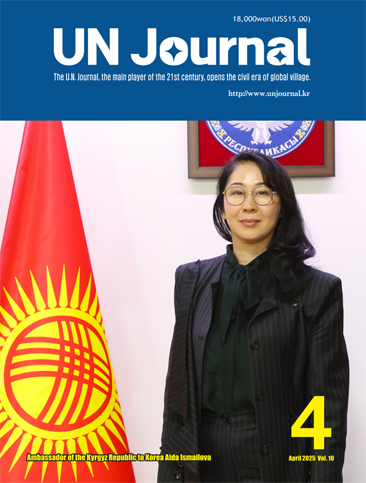(Exclusive) Aifeex, a global multi-level Ponzi scam
Aifeex, touted as an "AI Financial Revolution," is actually a "digital Ponzi scam" worth hundreds of billions of won.
By UN Journal Lee Gil-ju Lured investors with false advertising of a NASDAQ listing... Withdrawals currently suspended - Damages estimated at hundreds of billions of won, with serious impact on ordinary citizens, including the elderly and housewives. Recently, Aifeex LTD, which lured investors with promises of high returns under the guise of an "AI-based automated fund system," has been revealed to be facing a massive redemption suspension, marking the end of a typical Ponzi scam. Aifeex operates in Korea, the United States, China, Japan, Vietnam, Singapore, and Malaysia, raising concerns that it could escalate into an international multi-level Ponzi scam. A spectacular lie: The Nasdaq listing and the fiction of AI profits Aifeex claimed to be a fintech company headquartered in New York, USA, promising guaranteed daily returns of 3-3.5% and stable asset growth. Using these grandiose, deceptive advertising claims, they lured investors from Korea, Southeast Asia, and the Middle East. The most critical deceptive tactic was the "Nasdaq listing." They falsely promoted a similarly named Nasdaq-listed SPAC called "Aifeex Nexus Acquisition Corp" as their own company. However, this listed company was found to have no connection to the Aifeex multi-level marketing company, and when allegations of fraud surfaced, Aifeex changed its stance, stating, "We will list on the Nasdaq later." Domestic and international news warns of suspected illegal receiving and Ponzi schemes by Aifeex Domestic and international financial authorities and security firms are already sounding the alarm about Aifeex. On March 21, 2025, Upbit, a domestic digital asset exchange, announced that Aifeex was added to a list of companies suspected of illegal Ponzi schemes and Ponzi scams, which it would not allow for withdrawal address registration. Furthermore, on June 8, 2025, the Securities Commission of Malaysia (SC Malaysia) officially designated Aifeex as a target of caution, including its investor warning list. The situation overseas is also dire. Chinese-language media outlets are warning Aifeex of "suspicious Ponzi scheme/high risk" and reporting on large-scale withdrawal delays. In Japan, victims have also reported to the police and consulted with consumer protection centers. Several illegal Ponzi scheme monitoring sites, including BrokersView, have also classified Aifeex as a "SCAM" or "unverified." These assessments can be seen as a verification of Aifeex's involvement in an illegal multi-level Ponzi scheme. Aifeex, with three keywords: "Cryptocurrency + AI + Multi-Level Marketing", is an international multi-level marketing fraud operating in multiple countries, including Korea, China, Japan, Vietnam, Malaysia, and Singapore, and it is currently unpredictable in terms of the number of victims and the amount of damage. Is Aifeex's Takwin, a revolution in AI investment platforms? Or a scam? Aifeex (and its promotional press releases) introduced Takwin as the "Takwin Core Calculation System" and "AI Automated Trading Engine." They touted its massive parameter count of "270 billion parameters," high prediction accuracy (e.g., 92% trading accuracy), and extremely high returns (e.g., 365% to 730% annualized). These claims are repeatedly emphasized on Aifeex's official website, global press releases, and multi-level marketing training centers. Aifeex's claims of a parameter count (e.g., tens of billions to hundreds of billions) and a 92% "trading accuracy" are "highly unusual and require verification." For example, the publicly known large-scale language model GPT-3 has parameters not 17.5 billion, but 175 billion (=1.75×10^11) (Reference: GPT-3 = 175B). The parameters and performance of large models are subject to public verification and expert review. If an AI system claims to have achieved "92% accuracy in real trading" globally, that claim must be supported by publicly available back tests, verification reports, and independent verifiers to be reasonably accepted. — Aifeex/Takwin do not provide such transparent verification data. Takwin itself (the AI automated trading engine promoted by Aifeex) fails to provide publicly verifiable trading evidence (backtesting, transaction history, independent audits), and independent regulators and analysts have warned that Aifeex/Takwin is highly likely a "click-a-button" Ponzi/multi-level marketing scheme. Why are the claims made by Aifeex (Takwin) automated trading AI unreliable from a common-sense perspective? Question 1) The claim that "AI will automatically make money" is unrealistic. Even the world's leading AI companies (Google, OpenAI, Meta) have failed to create an "always-winning investment AI." It's impossible for AI to predict the market, and even if it could, the market would constantly change due to the actions of other investors. " Question 2) Takwin advertises a guaranteed return of 1-3% per day, 30-90% per month, and over 300-1,000% per year. However, even Warren Buffett, the world's greatest investor, boasts an average annual return of 20%, and global hedge funds boast returns of 10-25%. Furthermore, AI-focused hedge funds also boast returns of 10-30%. Takwin's claim of "300% to 1,000% per year" is an impossible number. Question 3) "The very fact that it uses a multi-level marketing (MLM) structure is evidence of a Ponzi scheme." Aifeex (Takwin) rewards more for recruiting customers than for investment returns. This is because it operates on "new investment funds" rather than actual profits, making it a Ponzi scheme. Question 4) "The point is coming when withdrawals will be blocked." This is a typical pattern of Ponzi schemes, and in a normal business model, withdrawals are not blocked. Question 5) "Training logs, algorithms, and actual transaction details are not disclosed." Aifeex (Takwin) does not disclose transaction records, algorithm information, AI model information, third-party audit information, or program source code information. Expert opinions are as follows: Assuming that Takwin actually exists and performs automated cryptocurrency trading via AI regardless of profitability, massive facility investment would be required. This would require at least hundreds of billions of won worth of GPUs and a dedicated operational center. To prevent and detect international multi-level Ponzi schemes like Aifeex, international cooperation, like the recent Cambodian incident, is urgently needed.




































